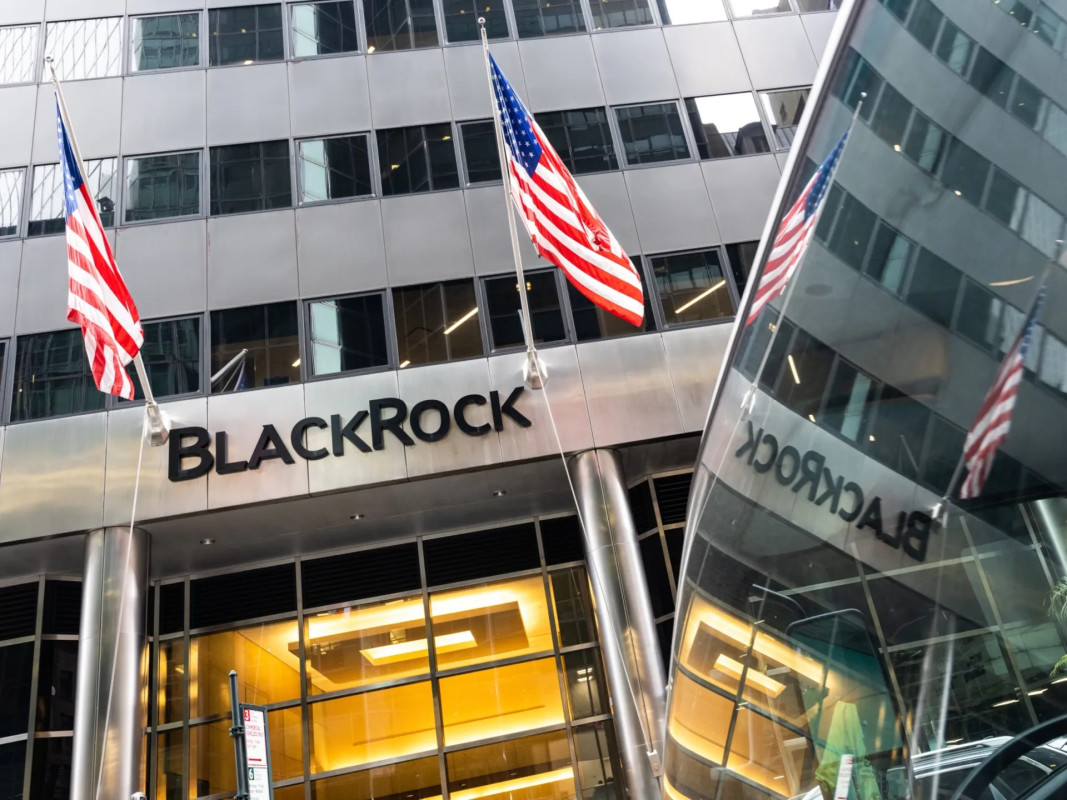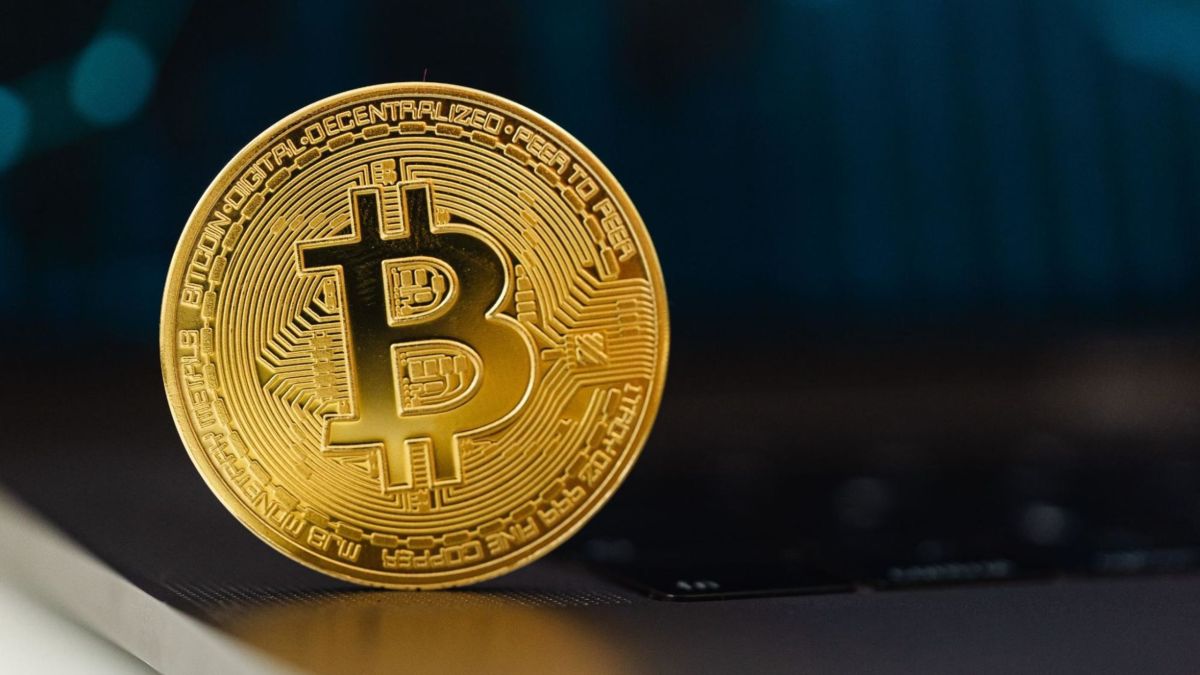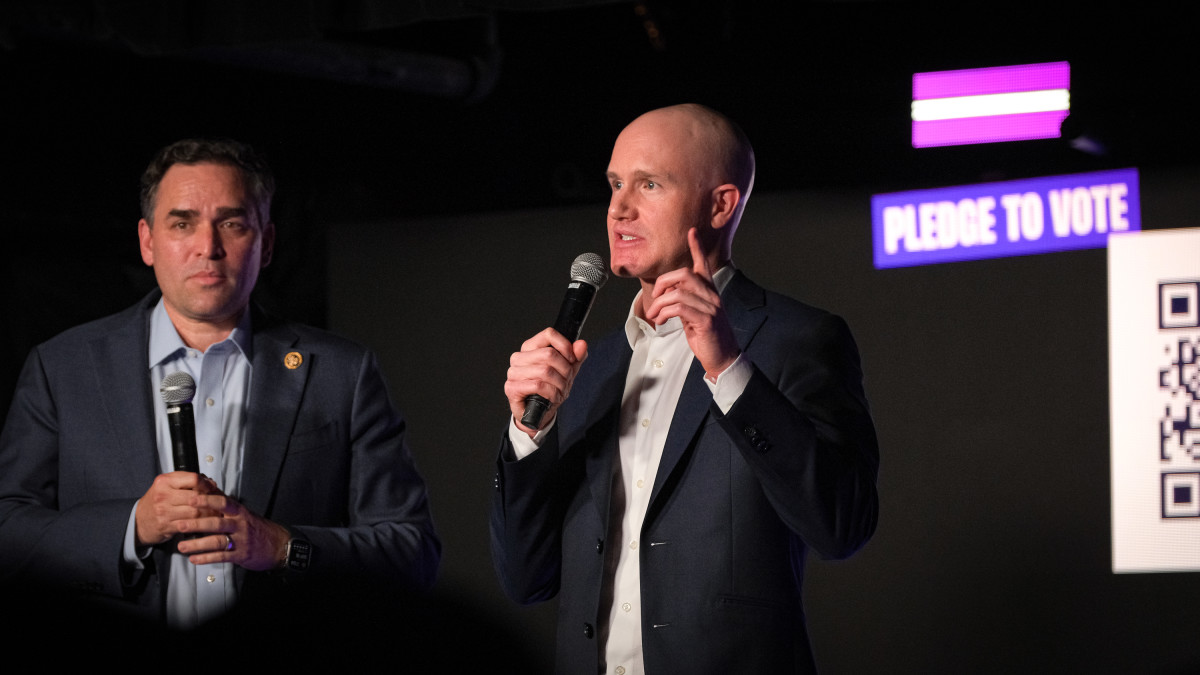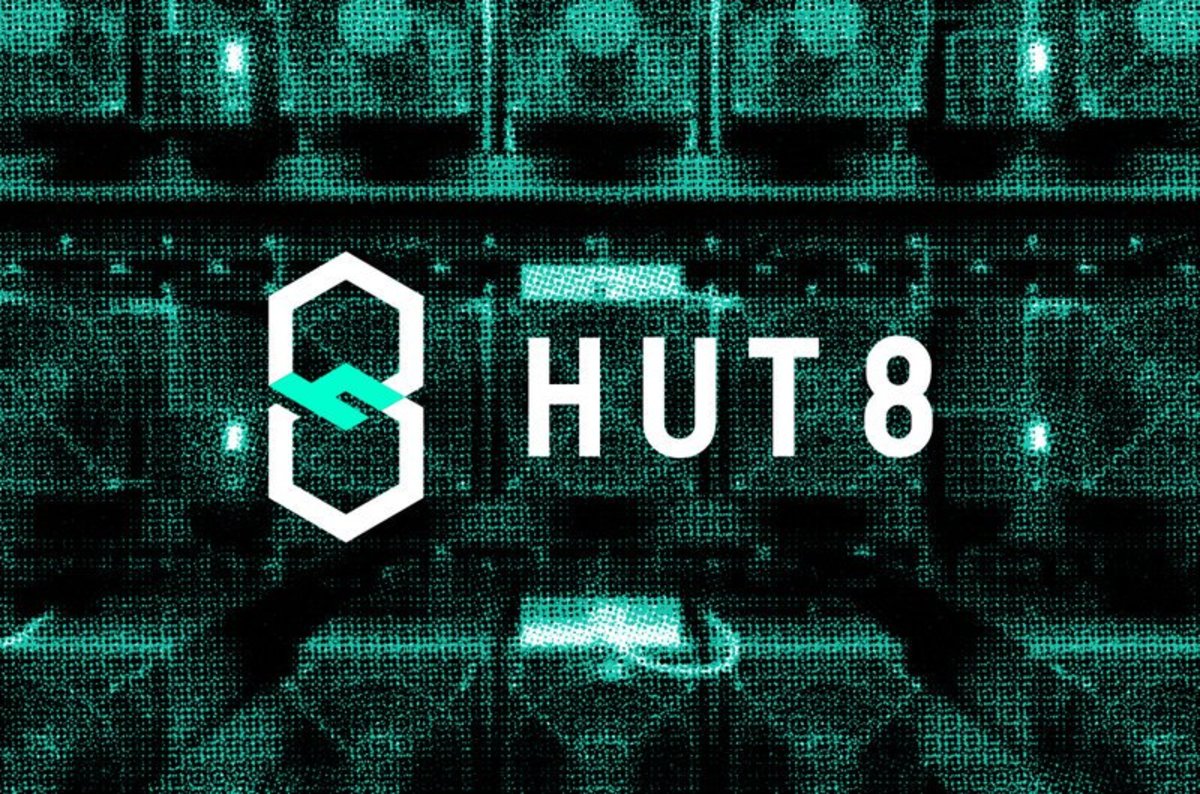Month: September 2024
SEC Approves Options Trading on BlackRock’s Spot Bitcoin ETF IBIT
The U.S. Securities and Exchange Commission (SEC) has just granted approval for the listing and trading of options on BlackRock’s spot Bitcoin ETF, the iShares Bitcoin Trust (IBIT).
The approved options on the iShares Bitcoin Trust will be physically settled, meaning that when the option is exercised, Bitcoin will be delivered to fulfill the contract. These American-style options can be exercised at any time before the expiration date, providing flexibility for traders. According to the SEC, the listing will follow the same rules as options on other exchange-traded funds (ETFs), including position limits and margin requirements.
“I’m assuming others will be approved in short order,” said Bloomberg Senior ETF Analyst Eric Balchunas. “Huge win for the the bitcoin ETFs (as it will attract more liquidity which will in turn attract more big fish). This is nice surprise re timing but not a shocker as James Seyffart and I gave 70% odds of approval by end of May.”
The SEC highlighted that this approval would allow investors to hedge their positions on Bitcoin, using the options market to mitigate the inherent volatility of BTC. The iShares Bitcoin Trust has been the most liquid spot Bitcoin ETF, which helped meet the requirements for trading options. The SEC also emphasized that extensive surveillance mechanisms would be in place to monitor potential market manipulation and ensure orderly trading.
“IBIT is the most liquid spot Bitcoin ETF and the 11th most liquid ETF in the U.S. by average volume (34,825,921 shares) and 18th largest by average notional ($1,246,060,738),” stated the SEC. “As of May 22, 2023, IBIT had approximately 193,956 shareholders.”
This approval by the SEC continues the trend of expanding regulated financial products based on Bitcoin, pushing it closer to full integration within the global financial system. The ability to trade options on a spot Bitcoin ETF provides new opportunities for institutional investors who wish to engage with the Bitcoin market while maintaining a higher level of risk management.
“Important note: This is just one stage of approval, the OCC and CFTC has to approve as well before they officially list,” Balchunas continued. “The other two don’t have a ‘clock’ so not sure when they’ll be approved. A big step tho nonetheless that the SEC came around.”
How Bitcoin Will React After The U.S. Election
As the U.S. presidential election approaches, it’s worth examining how past elections have influenced Bitcoin’s price. Historically, the U.S. stock market has shown notable trends around election periods. Given Bitcoin’s correlation with equities and, most notably, the S&P 500, these trends could offer insights into what might happen next.
S&P 500 Correlation
Bitcoin and the S&P 500 have historically held a strong correlation, particularly during BTC’s bull cycles and periods of a risk-on sentiment throughout traditional markets. This could phenomenon could potentially come to an end as Bitcoin matures and ‘decouples’ from equities and it’s narrative as a speculative asset. However there’s no evidence yet that this is the case.
Figure 1: Bitcoin & The S&P 500 180-day correlation over the past five years. View Live Chart 🔍
Post Election Outperformance
The S&P 500 has typically reacted positively following U.S. presidential elections. This pattern has been consistent over the past few decades, with the stock market often experiencing significant gains in the year following an election. In the S&P500 vs Bitcoin YoY Change chart we can see when elections occur (orange circles), and the price action of BTC (black line) and the S&P 500 (blue line) in the months that follow.
Figure 2: Bitcoin & The S&P 500 outsized returns in the year post-election. View Live Chart 🔍
2012 Election: In November 2012, the S&P 500 saw 11% year-on-year growth. A year later, this growth surged to around 32%, reflecting a strong post-election market rally.
2016 Election: In November 2016, the S&P 500 was up by about 7% year-on-year. A year later, it had increased by approximately 22%, again showing a substantial post-election boost.
2020 Election: The pattern continued in 2020. The S&P 500’s growth was around 17-18% in November 2020; by the following year, it had climbed to nearly 29%.
A Recent Phenomenon?
This isn’t limited to the previous three elections while Bitcoin existed. To get a larger data set, we can look at the previous four decades, or ten elections, of S&P 500 returns. Only one year had negative returns twelve months following election day (2000, as the dot-com bubble burst).
Figure 3: The S&P 500 has performed well following election day a majority of the time.
Historical data suggests that whether Republican or Democrat, the winning party doesn’t significantly impact these positive market trends. Instead, the upward momentum is more about resolving uncertainty and boosting investor confidence.
How Will Bitcoin React This Time
As we approach the 2024 U.S. presidential election, it’s tempting to speculate on Bitcoin’s potential performance. If historical trends hold, we could see significant price increases. For example:
If we experience the same percentage gains in the 365 days following the election as we did in 2012, Bitcoin’s price could rise to $1,000,000 or more. If we experience the same as the 2016 election, we could climb to around $500,000, and something similar to 2020 could see a $250,000 BTC.
It’s interesting to note that each occurrence has resulted in returns decreasing by about 50% each time, so maybe $125,000 is a realistic target for November 2025, especially as that price and data align with the middle bands of the Rainbow Price Chart. It’s also worth noting that in all of those cycles, Bitcoin actually went on to experience even higher cycle peak gains!
Figure 4: Rainbow Price Chart aligning with post-election price target based on historical pattern. View Live Chart 🔍
Conclusion
The data suggests that the period after a U.S. presidential election is generally bullish for both the stock market and Bitcoin. With less than two months until the next election, Bitcoin investors may have reason to be optimistic about the months ahead.
For a more in-depth look into this topic, check out a recent YouTube video here: Will The U.S. Election Be Bullish For Bitcoin?
MicroStrategy Buys Additional $489 Billion Worth of Bitcoin
MicroStrategy CEO Michael Saylor announced on September 20 that it has purchased an additional 7,420 bitcoins for approximately $489 million. The company now holds over 252,000 Bitcoin, acquired for $9.9 billion.
BREAKING: MicroStrategy buys another 7,420 #Bitcoin for $458.2 million. pic.twitter.com/4nBm3EUH6M
— Bitcoin Magazine (@BitcoinMagazine) September 20, 2024
Since 2020, MicroStrategy has adopted a Bitcoin-focused corporate strategy, taking advantage of Bitcoin’s potential as an inflation hedge and store of value. The company has accumulated over 252,000 bitcoins worth more than $15 billion, substantially increasing shareholder value.
MicroStrategy has borrowed money by issuing convertible senior notes to fund its Bitcoin purchases. It recently raised over $1 billion through note offerings, partly to acquire more Bitcoin. Other public companies have emulated this “buy Bitcoin” corporate strategy to take advantage of Bitcoin’s growth.
MicroStrategy’s Bitcoin treasury purchases are like a large-scale “speculative attack” against fiat currencies. By exchanging fiat for scarce bitcoin when it is undervalued, the company could reap enormous returns if bitcoin continues appreciating as a global digital store of value.
The company is undertaking the largest speculative challenge against fiat currency in history by adding the most resilient asset to its treasury. Other public companies are beginning to emulate MicroStrategy by implementing Bitcoin treasury strategies and gaining Bitcoin exposure on their balance sheets.
Santa Monica Bitcoin Office Case Study to be Presented at CMRTA Annual Conference
Proof of Workforce, joined by Santa Monica Vice Mayor Lana Negrete, will showcase the Santa Monica Bitcoin Office at the upcoming California Municipal Revenue and Tax Association (CMRTA) Annual Conference on October 9-10. They will present a case study on the innovative municipal office, the first of its kind in the U.S.
Launched in July 2024 after a unanimous city council vote, the Santa Monica Bitcoin Office aims to educate residents about Bitcoin’s potential while identifying industry partnerships to support economic recovery and job creation.
“Proof of Workforce is excited to share our experiences and insights with other municipal leaders at the CMRTA conference,” said founder Dom Bei. “Already, through our early initial work, there are many valuable lessons learned and opportunities that have emerged.”
Vice Mayor Negrete added, “We have received an overwhelming amount of interest and positive engagement as we continue to learn about Bitcoin as a community.”
The presentation will highlight challenges and opportunities in implementing the novel office. It will offer lessons for other municipalities considering similar initiatives. The CMRTA conference, which convenes municipal finance experts from across California, covers topics such as personal branding, regulatory updates, ballot measures, and emerging issues like Bitcoin.
Proof of Workforce coordinates the Bitcoin Office at no cost to Santa Monica. The non-profit provides Bitcoin education and adoption resources for workers, unions, pension funds, and cities.
Satoshi Era Wallets Moved $16 Million Worth of Bitcoin
Around 250 BTC from the early days of Bitcoin, known as the “Satoshi era,” were transferred on Friday in five separate transactions, each moving around 50 BTC to new wallets. The total value of the transfers was close to $16 million.
The coins were originally mined in January 2009, just months after Bitcoin’s launch, and have lain dormant since. Arkham blockchain analysis shows the wallets are not linked to Bitcoin’s pseudonymous creator, Satoshi Nakamoto.
The original wallets that moved the coins are: 1CGT3Ywaa2upJfWtUtbXonDPNTfZPWqzmA, 1MBBJBFEaYKHFZAeV7hQ7DWdu3aZktjzFH, 13J8FkimCLQ2EnP1xRm7yHhpaZQa9H4p8E, 18E5d2wQdAfutcXgziHZR71izLRyjSzGSX, 1C4rE41Kox3jZbdJT9yatyh4H2fMxP8qmD
The transfers likely belonged to an early Bitcoin miner who acquired the coins when BTC was practically worthless. After holding them for over 15 years, they are now valued at $16 million.
This demonstrates the conviction of early believers who recognized Bitcoin’s potential value long before the recent meteoric price rises. The anonymous owner mined and held these coins when Bitcoin was a niche experiment, exhibiting remarkable faith.
While the original owner remains a mystery, the transfers are among one of the largest amounts of “Satoshi era” Bitcoin ever moved. There has been no activity sending the coins to exchanges, indicating the owner may intend to continue holding them.
Dollar edges off lows; sterling gains after strong retail sales
Post Content
Asia FX rises as rate cut dents dollar; yen firms as BOJ holds course
Post Content
Stay long on the yen amid rate hikes, improving growth- BCA
Post Content
Bipartisan Consensus Emerges on Final Day of America Loves Crypto Tour
The final event of the America Loves Crypto tour took place yesterday in Washington, D.C. as the country counts down to the 2024 election. Speakers including Coinbase CEO Brian Armstrong, ConSensys CEO Joseph Lubin, and Congressman Wiley Nickel (D-NC) addressed the maximum capacity crowd at the Black Cat music venue.
The speakers largely agreed on one idea: the importance of supporting cryptocurrency in America through a concerted bipartisan effort.
In their shared stage appearance, Brian Armstrong and Congressman Nickel noted that they see it as critical to keep and foster cryptocurrency innovation in America.
This importance, for Nickel in particular, is not so solely founded on a belief in the technology, but is ostensibly due to the fact that 20% of American adults own some form of cryptocurrency, a voting block that Nickel thinks “[has] the ability to sway elections.”
Nickel added: “If we want to do things in Washington, it’s critically important that we do it in a bipartisan way. If we politicize the issue with one party going into crypto versus another, it’s going to poison the well in Washington for a decade.”
Since Biden took office in 2020, his administration’s SEC, DoJ and DoE (Department of Energy) officials have introduced a fair amount of unwelcome regulatory hurdles. Notably, Nickel’s support of cryptocurrency does signal a change of tune for the historically hostile Democratic Party.
“I started coming to DC five years ago, and when I first came here, most people didn’t know what crypto even was,” said Armstrong. “One member of Congress asked me: ‘Isn’t this all some video game or something like that?’ Once they figured out what crypto was over the years, the conversation totally shifted. Now, everybody knows what crypto is, we’re kind of the belle of the ball, the hot topic on everyone’s lips.”
However, one attendee, an executive at a prominent financial institution who wished to remain anonymous, reflected on the development of crypto-politicking and what they see as under-commitment on the part of the Democratic Party.
In particular, the executive believes that the Biden administration’s veto of legislation overturning SAB 121, which if signed would have allowed highly regulated financial institutions to custody digital assets, was a major wake-up call.
They remarked that the crypto industry, despite raising large amounts of money for campaign contributions, still carries a strong stigma and that policymakers don’t offer the respect this single-issue voter bloc deserves.
The America Loves Crypto tour had been focused on addressing the stigma with a mixture of live music and grassroots community building. Alex Pall and Drew Taggart, otherwise known as The Chainsmokers, closed out the event, entertaining the crowd with their classic hits, unreleased music, and most notably a cry of “F$*# Gary Gesnler”. The Chainsmokers themselves are no strangers to cryptocurrency and founded the tech and crypto-focused Mantis Venture Capital fund in 2020.
With stops in Arizona, Nevada, Michigan, Wisconsin, Pennsylvania and Washington, D.C., many in attendance on the America Loves Crypto tour were hopeful that more than 1.4 million Stand With Crypto advocates nationwide can flex their muscle as a true deciding factor in November.
Hut 8 and BITMAIN To Launch Next-Generation ASIC Bitcoin Miner with Liquid-to-Chip Cooling
Hut 8 Corp. (Nasdaq | TSX: HUT), a leading Bitcoin mining company, has expanded its partnership with BITMAIN Technologies Ltd., the world’s largest producer of Bitcoin mining servers, to launch the U3S21EXPH, a next-generation ASIC miner. This model will be the first mass-commercialized miner to feature direct liquid-to-chip (DLC) cooling within a U form factor.
Hut 8 plans to deploy the new miner in the second quarter of 2025, with an initial hosting agreement handling approximately 15 exahash per second (EH/s). This hosting deployment, facilitated by custom-built data center infrastructure developed in-house by Hut 8, is a key part of the company’s strategy to expand its computing power across Bitcoin mining and AI compute sectors.
“Our partnership with BITMAIN has allowed us to advance our thinking on ASIC compute and create a more scalable model for data center design as we expand our footprint,” said Asher Genoot, CEO of Hut 8. “The U3S21EXPH will be the first miner from BITMAIN broadly commercialized with DLC cooling within a U form factor, making it rack-ready like traditional data center hardware. This innovation bridges critical engineering gaps between Bitcoin mining and AI data center infrastructure in both form factor and cooling technology, and we believe this convergence will enable us to unlock significant synergies and flexibility going forward.”
The U3S21EXPH can achieve an efficiency of 13 joules per terahash, producing up to 860 terahash. It uses DLC cooling, a technology traditionally reserved for high-performance computing (HPC) data centers, to make Bitcoin mining more energy efficient and scalable.
“Asher and Mike have been invaluable thought partners to BITMAIN since the early days of US Bitcoin Corp, where they demonstrated a unique focus on cost-efficient procurement and operations,” said Irene Gao, Vice President of Mining at BITMAIN. “Hut 8’s technical expertise, operating strength, and track record of innovation made this partnership a natural evolution of our relationship as we began the journey of developing next-generation ASIC technology.”
The commercial agreement between Hut 8 and BITMAIN includes a fixed hosting fee and a purchase option for Hut 8 to buy the hosted machines in up to three tranches. This structure allows Hut 8 to assess market conditions before making further investments, minimizing financial risk. If Hut 8 exercises this purchase option, its self-mining capacity could grow from 5.6 EH/s to 20.6 EH/s.









